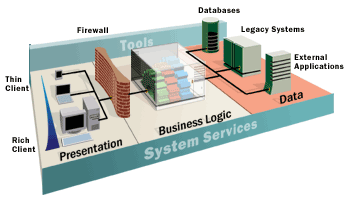| ||||||||||||||||||||||||||||
XML Overview

Extensible Markup Language (XML) is the universal language for data on the Web. XML gives developers the power to deliver structured data from a wide variety of applications to the desktop for local computation and presentation. XML allows the creation of unique data formats for specific applications; it is also an ideal format for server-to-server transfer of structured data.
XML is an integral part of the Microsoft® Windows® Distributed interNet Applications (Windows DNA) architecture for data delivery and exchange between multiple tiers. There are many benefits to using XML both on the Web and in the middle tier:
Delivers data for local computation.
Gives users an appropriate view of structured data.
Enables the integration of structured data from multiple sources into common logical views.
Describes data from a wide variety of applications.
Improves performance through granular updates.
To date, Microsoft has actively participated in the W3C's ![]() creation and standardization of XML and has aggressively delivered XML support in its products. For example, Microsoft Internet Explorer was the industry's first browser software to support XML. For developers, Microsoft provides a standalone, redistributable version of MSXML, a general purpose XML parser that lets any application easily manipulate XML information. Finally, with dozens of industry partners, customers and standards bodies, Microsoft has helped develop the BizTalk Framework to accelerate the adoption and use of XML for e-commerce and enterprise application integration.
creation and standardization of XML and has aggressively delivered XML support in its products. For example, Microsoft Internet Explorer was the industry's first browser software to support XML. For developers, Microsoft provides a standalone, redistributable version of MSXML, a general purpose XML parser that lets any application easily manipulate XML information. Finally, with dozens of industry partners, customers and standards bodies, Microsoft has helped develop the BizTalk Framework to accelerate the adoption and use of XML for e-commerce and enterprise application integration.
The XML technical articles provide overviews of XML and its related technologies, as well as how to use XML in applications. The code samples show how to use Visual Studio and the Microsoft XML parser to read and write XML documents. The Duwamish Books sample is a Windows DNA application built with Visual Studio and leveraging XML for data exchange. The BizTalk JumpStart Kit shows how to generate Visual Studio middle-tier components based on an XML schema. The SQL Server XML Technology Preview enables queries to be sent directly to SQL Server 7.0 via a URL, with the results returned as XML-formatted documents.